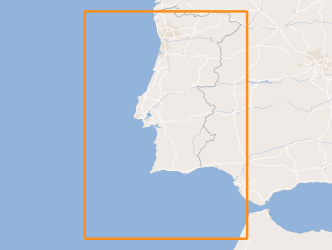Trachurus trachurus
Type of resources
Available actions
Topics
INSPIRE themes
Keywords
Contact for the resource
Provided by
Years
Formats
Representation types
Update frequencies
status
Scale
Resolution
-

Fish larvae were collected by the continuous plankton recorder (CPR, operated by SAHFOS) all year long between 1951 and 2005 along transects in the Celtic Sea and English Channel. The CPR is towed by ships of opportunity at speeds of 15 to 20 knots, at an approximate depth of 10 m. Water enters the recorder through an aperture of 1.27 cm2, and is filtered through a continuously moving band of silk with an average mesh size of 270 μm.
-

Fish larvae were collected by the continuous plankton recorder (CPR, operated by SAHFOS) all year long between 1951 and 2005 along transects in the Celtic Sea and English Channel. The CPR is towed by ships of opportunity at speeds of 15 to 20 knots, at an approximate depth of 10 m. Water enters the recorder through an aperture of 1.27 cm2, and is filtered through a continuously moving band of silk with an average mesh size of 270 μm.
-

Within Portugal's National Biological Sampling Project (PNAB) a set of activities are conducted in the collection, management and use of biological data, collected from the registered commercial fleet in mainland Portugal (fisheries-dependent data) and several research surveys (independent fisheries data). These activities allow the assessment of the state of fishery resources, population structure, distribution and abundance of resources, diversity and dynamics of biological communities associated with the fishery resources and biological studies (growth, reproduction).This resource shows the geographic distribution of horse mackerel abundancy index (nr. individuals/hour) registered during the DEMERSAL2008 campaign in September 2008.
-

Within Portugal's National Biological Sampling Project (PNAB) a set of activities are conducted in the collection, management and use of biological data, collected from the registered commercial fleet in mainland Portugal (fisheries-dependent data) and several research surveys (independent fisheries data). These activities allow the assessment of the state of fishery resources, population structure, distribution and abundance of resources, diversity and dynamics of biological communities associated with the fishery resources and biological studies (growth, reproduction).This resource shows the geographic distribution of horse mackerel abundancy index (nr. individuals/hour) registered during the PELAGO09 acoustic campaign in April 2009.
-

Within Portugal's National Biological Sampling Project (PNAB) a set of activities are conducted in the collection, management and use of biological data, collected from the registered commercial fleet in mainland Portugal (fisheries-dependent data) and several research surveys (independent fisheries data). These activities allow the assessment of the state of fishery resources, population structure, distribution and abundance of resources, diversity and dynamics of biological communities associated with the fishery resources and biological studies (growth, reproduction).This resource shows the geographic distribution of horse mackerel abundancy index (nr. individuals/hour) registered during the DEMERSAL2009 campaign in September 2009.
-

Within Portugal's National Biological Sampling Project (PNAB) a set of activities are conducted in the collection, management and use of biological data, collected from the registered commercial fleet in mainland Portugal (fisheries-dependent data) and several research surveys (independent fisheries data). These activities allow the assessment of the state of fishery resources, population structure, distribution and abundance of resources, diversity and dynamics of biological communities associated with the fishery resources and biological studies (growth, reproduction). This resource shows the geographic distribution of horse mackerel abundancy index (nr. individuals/hour) registered during the PELAGO08 acoustic campaign in April 2008.
-

Les données de débarquements géolocalisés de capture de pêche de la zone GSA 07, de 2015 à 2019, ont été obtenues auprès du Système d’Information Halieutique (SIH) d’Ifremer avec l’autorisation de la Direction des pêches maritimes et de l’aquaculture (DPMA) du Ministère de l’Agriculture et de la Pêche. La capture par unité d'effort (CPUE) correspond la quantité débarquée de l’espèce en kilogrammes divisée par le temps passé à pêcher l’espèce en heure. La CPUE (kg/tps) a été calculée annuellement entre 2015-2019 puis la moyenne et l'écart-type ont été calculés sur cette période par espèce.
-

La densité (nombre individus/km²) a été calculée annuellement à partir des données de la campagne MEDITS entre 1994 et 2019. Les données ont été transformées par logarithme décimal log10 (x+1) puis une analyse variographique et un krigeage ordinaire ont été effectués pour interpoler les données de densité dans le Golfe du Lion. Une carte de variance de krigeage a été calculée pour chaque espèce et chaque pas de temps.
-

La densité (nombre individus/km²) a été calculée annuellement à partir des données de la campagne MEDITS entre 1994 et 2019. Les données ont été transformées par logarithme décimal log10 (x+1) puis une analyse variographique et un krigeage ordinaire ont été effectués pour interpoler les données de densité dans le Golfe du Lion. Une carte de variance de krigeage a été calculée pour chaque espèce et chaque pas de temps.
-

La densité (nombre individus/km²) a été calculée annuellement à partir des données de la campagne MEDITS entre 1994 et 2019. Les données ont été transformées par logarithme décimal log10 (x+1) puis une analyse variographique et un krigeage ordinaire ont été effectués pour interpoler les données de densité dans le Golfe du Lion. Une carte de variance de krigeage a été calculée pour chaque espèce et chaque pas de temps.
 Metadata catalogue
Metadata catalogue